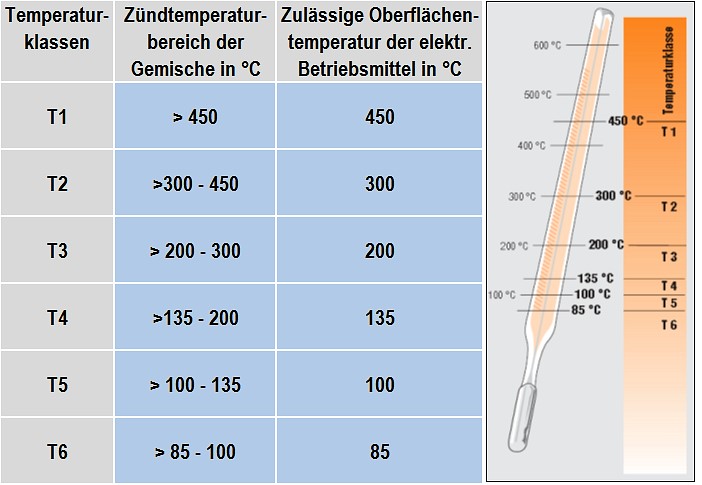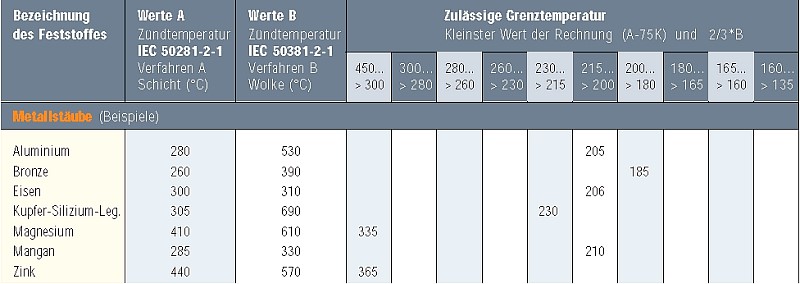Ignition temperature
Common designation of the temperature at which a substance will spontaneously ignite when in contact with a hot body (also called kindling temperature, kindling point or ignition point).
The ignition temperature is the lowest temperature which combustible gases, vapors, dusts or dispersed solids must have in so-called “most ignitable” mixtures with air in order to induce combustion. This means, that this is the temperature to which a material or contact surface must be heated in order for a flammable substance to auto-ignite in the presence of air without any spark but only due to its heating, i.e. without any ignition source.
Regarding explosives, the ignition temperature is also referred to as deflagration temperature. Knowing the ignition temperature (and the flash point) is of special importance when dealing with hazardous materials considered as flammable and/or explosive substances, regarding occupational safety, identification by means of the relevant hazard symbols, classification into hazard classes for transport provisions, etc.
The ignition temperature is influenced by a variety of factors such as the size, shape, type and quality of the surface. In IEC 60079-4, IEC, CENELEC and other standardization bodies agreed on a “method of test for ignition temperature” for gases and vapors. This method is defined such that it enables very close approximation to the lowest value practically possible. Gases and vapors are divided into temperature classes according to this method. Thus, a qualitative distinction is made between spontaneously flammable, highly flammable and hardly flammable substances. A more detailed classification can be done by temperature classes (T1-T6, see Table 1) or ignition groups (G1-G5). Based on these temperature classes, the surface temperatures of explosion-protected and other technological equipment are designed in such a way that surface temperature ignition is not possible.
Ignition temperature of dusts
For dusts (in particular metal dusts), the method for determining the ignition temperature has also been standardized and defined in IEC 61241-2-1. It should be noted that dust exhibits different ignition temperatures depending on whether it is tested in deposited condition as a layer according to method A or in stirred-up condition as a cloud according to method B.
The admissible surface temperature for parts of systems, devices or components accessible to the dust can be derived by subtracting 75K from the value determined according to A and calculating 2/3 of the value determined by B. The lower of these two values represents the admissible surface temperature of the equipment (Table 2). Surface means the area which is accessible to the dust; temperature classes are not defined for dusts so that the relevant dust must always be considered individually.
Additional references:
Explosive atmosphere
Explosive limit



